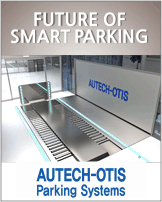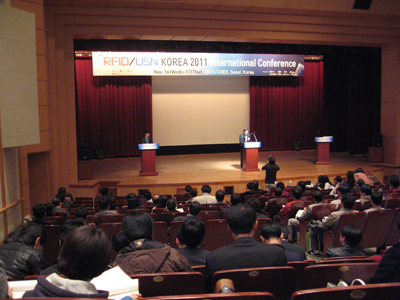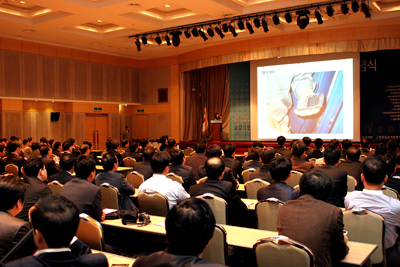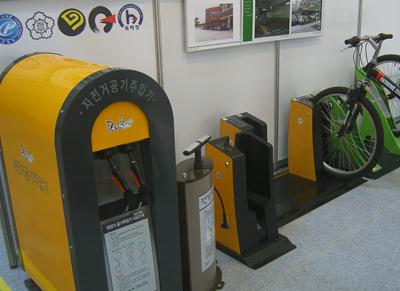|
|
|
RFID/USN, the power that leads to a smart society! Spotlight on +α industry to create new added value Discovering a successful IT convergence model, striving for growthable products 2011/12  RFID (Radio Frequency Identification), which attaches tags with unique codes to objects and recognizes and identifies information on objects using radio waves, and USN (Ubiquitous Sensor Network), which is configured to collect information wirelessly through various sensors, are under the spotlight as "+α industries" that create new added value for industries. Since RFID can contain a lot of information on a single chip, it has a wide range of applications in the fields of defense, logistics, agriculture, and livestock, as well as product tracking, warehousing, and asset management. In addition, with the recent popularization of smartphones, mobile RFID, which uses services such as e-payment, e-ticketing, and e-coupons, is expected to grow rapidly, bringing great changes to consumers and the entire industry. Smartphones equipped with 13.56M Hz RFID readers capable of short-range communication are being announced one after another, and the first mobile RFID zone in Korea, which allows users to experience services such as location finding, theater reservation, and payment with a smartphone equipped with an RFID reader, is being built in 10 theaters nationwide by Megabox Cinemas this year alone. The service is also having an impact on the industry, allowing users to easily identify products, services, and companies by simply touching their smartphones to RFID tags attached to products in seven strategic industries, including pharmaceuticals, fashion, auto parts, food, and courier services. There are countless services available with smartphones equipped with RFID readers, such as checking the authenticity of luxury goods, food distribution information, information search, auto loans, and movie previews. Ubiquitous Sensor Network (USN), which has been promoted to efficiently manage social infrastructure such as energy management, traffic management, disaster and disaster management, ocean and weather observation, and water quality and environmental information management, is also expanding its application to personalized services such as healthcare and life safety as portable personal information devices such as smartphones become more popular. USN is a wireless network technology that processes a lot of information in real time by installing sensor nodes that combine sensors that can detect, detect, and read physical quantities such as light, temperature, and movement in a wide area. It is recognized as a core infrastructure that constitutes a smart world along with RFID by sharing information through the network without feeling the presence of a computer, collecting specific information, and providing various services. It can be widely used in areas such as infrastructure safety monitoring, forest fire monitoring, industrial facility monitoring, and national defense by installing hundreds of sensor network nodes in vulnerable areas or very large areas that are difficult for humans to monitor all the time. In line with this trend, the government has recognized RFID/USN as a key infrastructure for strengthening national competitiveness, and is making moves to accelerate R&D, government pilot projects, expanding convergence with traditional industries, and overhauling the legal system. The Ministry of Health and Welfare has revised some of the notices on the Enforcement Rules of the Pharmacy Act and the Fee Calculation Method, which include instructions on the use and management of pharmaceutical barcodes and RFID tags, to require pharmaceutical barcodes or RFID tags to be attached to pharmaceuticals manufactured or imported and distributed domestically, and to extend this to specialty drugs after 2013. In September 2010, the Ministry of Land, Infrastructure, Transport and Maritime Affairs enacted a law requiring the use of RFID for vehicles using port facilities, and the National Tax Service excluded the cost of RFID tags from the taxable base of state taxes in six major metropolitan areas from 2011 and made it mandatory to attach RFID tags, which will be implemented nationwide in 2012. Incentives such as tax incentives, tax support, and administrative penalty relief have also been introduced. The National Tax Service has eased tax inspections for companies using RFID and excluded the cost of tags from the main tax base, while providing tax credits for RFID equipment investment and increased revenue due to the use of RFID. If a pharmaceutical company adopts an "RFID-enabled serialization system" for its medicines, it can deduct 7% of the investment from its income or corporate tax. Recognized by the government as a key infrastructure to enhance national competitiveness RFID/USN has a long history. It was first introduced in Korea in 2004, but it was not popularized due to the high unit cost of tags, but in 2008, intensive investment began in 18 diffusion projects such as food and defense, and 8 verification projects such as energy and cultural property management. By applying RFID/USN to areas of national importance such as alcoholic beverages, national defense, and power equipment, which are easy to spread in the future, the country's efficiency and transparency were enhanced. In 2009, we moved beyond piloting RFID/USN in the public sector to discovering successful models centered on the private industry that can apply RFID/USN on a large scale, creating conditions for the spread of demand, such as lowering the price of RFID equipment. We promoted 11 diffusion projects such as liquor, pharmaceuticals, and fashion, and 12 verification projects such as growth environment and ecological monitoring, and invested a total of 15 billion won in promising projects that can create large-scale demand and develop into success stories. In addition, we focused on the best projects through bold evaluation of existing government support projects. The u-IT new technology test and verification project, which invested KRW 3 billion, was mostly comprised of tasks linked to major government policies such as revitalizing the Four Rivers and creating a foundation. In 2010, we focused on continuously discovering large-scale tasks that can be led by private companies to create mass demand and improve corporate competitiveness, and promoted 10 diffusion projects in steel, electronics, etc. and 2 verification projects in logistics and energy to create a self-sustaining market for RFID/USN. By selecting and focusing on large-scale success models (best practices), we were able to create large-scale success models, and by focusing the budget on projects with large business effects, we expanded IT convergence and improved efficiency. This year, we focused on expanding RFID applications and discovering successful models by selecting and intensively fostering six strategic industries with high RFID adoption effects and high market growth potential, including liquor, home appliances, fashion, automobiles, home delivery, and food. We are also strategically promoting pharmaceutical + IT convergence and RFID-enabled services at the consumer level. In the case of USN, the focus has shifted from verification to diffusion with the expansion of leading models, and it is expected to create new types of IT convergence products and services in the future. RFID tag unit price decreased from 2,000 won in 2004 to 56 won in 2011 The popularization of RFID/USN is also due to the 'u-IT New Technology Verification and Diffusion Project', which has been promoted by the Ministry of Geosciences and Economy and the Information and Communication Industry Promotion Agency since 2008. The project aims to expand the success model by first applying RFID/USN, a representative +α industry, to industries with large industrial spillover effects. Companies participating in the project are applying RFID technology to all business activities, including production, logistics and distribution, and marketing, to increase the competitiveness of companies and industries. Of the total 19 projects implemented this year, six are continuing projects from 2010. Thirteen projects are newly adopted, spreading RFID across industries. In order to preempt the future a la carte distribution system market, six strategic areas have been selected, including auto parts and liquor, home appliances, fashion, home delivery, and food, and support is being focused on home appliances, home delivery, auto parts, and liquor. In particular, the smart RFID zone business, led by Megabox Cynus, Yangji Hospital, and FlexLCD, is differentiated from the existing business in that it expands RFID services to the consumer area. Especially in the field of pharmaceutical + IT convergence, pharmaceutical companies are in need of motivation to voluntarily introduce RFID as it is mandatory to attach RFID to all specialized drugs on a per-unit basis and manage their distribution history since 2013. The Ministry of Knowledge Economy and the Information and Communication Industry Promotion Agency plan to expand RFID attachment to 10 percent of all drugs distributed in Korea by 2012, and to add wholesalers, hospitals, and pharmacies for transparent drug management in all areas of distribution. The pharmaceutical market is particularly large, accounting for about 50 percent of the domestic demand for RFID tags in the UHF band, and the pharmaceutical industry's adoption of RFID is said to be the world's first successful model that can be exported. With the discovery of such successful models by industry, the demand for RFID is surging, and the unit price of tags is also decreasing. The unit cost of RFID tags has dropped from 2,000 won in 2004, when RFID was first introduced in Korea, to 220 won in 2008 and 56 won in 2011, while the cost of readers has dropped from 4.5 million won in 2004 to 1 million won in 2010. The demand for RFID tags increased from 5.85 million in 2008 to 86 million in 2010, and in 2011, more than 100 million tags were applied to industries in connection with the u-IT new technology verification and diffusion project. In particular, the pharmaceutical sector, where pharmaceutical + IT convergence has been promoted, uses a total of more than 80 million tags through five verification and expansion projects, accounting for more than half of the total demand. This is followed by liquor (50 million), fashion (6 million), and home appliances (5 million). RFID and USN activation is not limited to Korea. Several developed countries are also preparing legal frameworks for popularization and activation. The United States runs the Networking 7 Information Technology R&D (NITRD) program led by the National Science Foundation to improve the quality of life through IT development, and invests $300 million annually to promote a wide range of R&D between industry and academia. The Department of Defense, the FDA, and the Department of Homeland Security are continuing to expand the adoption of RFID on a mandatory basis. In November 2009, China selected the RFID industry as one of the top five IT emerging strategic projects and is promoting pilot projects, support policies, and standardization at the government level. The country is currently in the second phase of growth (2008-2012), expanding RFID applications, building large-scale production capacity, and establishing a public service system to ensure the continued development of the RFID industry. Japan, which has been promoting policies related to ubiquitous networks since 2006 under the IT New Reform Strategy, led by the Ministry of Economy, Trade and Industry and the Ministry of Internal Affairs and Communications, allocated 80 million yen in 2011 for international standardization of logistics IT and open sky (aviation liberalization) in cooperation with related ministries to promote international logistics. The government plans to promote RFID adoption to strengthen the competitiveness of international strategic ports, improve trade procedures, and enhance the convenience of domestic and international shipping and railways. The Ministry of Economy, Trade and Industry is promoting RFID technology and international standardization to improve transportation and logistics-related systems, improve infrastructure and services, and facilitate domestic and international distribution logistics. It is also promoting the international standardization of cargo management codes to make global supply chains visible, a project discussed at the Asia-Pacific Economic Cooperation (APEC). The European Commission (EC) issued a recommendation in 2009 to protect privacy and data in RFID-enabled operations. Over the next two years, EU member states will report on their efforts to comply with the recommendations and, starting in 2012, analyze the impact of the recommendations on businesses, public authorities, and European citizens. France has developed a plan to activate urban NFC services for public services such as transportation tickets and parking fees, as well as for museums and urban travel, and has invested $28.6 million in the project. Looking at the current trend of RFID technology overseas, specialized tags such as high-performance and ultra-small size are being developed, as well as packaged solutions such as tracking and security systems. Teijos has released a paper RFID tag without a plastic substrate, and MicroID has released a glass RFID tag for animal tracking that measures 1.4mm*8mm and weighs 0.52 grams. Alien Technology has introduced the HIX4, a chip in the UHF band, and four RFID tags for single-unit tracking. HIX4 can be purchased at a lower cost than before by reducing the user memory in the chip and can be selected according to the amount of user memory. Another example of a packaged solution that includes a tracking and security system is Winware's RFID material management solution, CribMaster Total Tool Control Solution. Designed for applications such as aircraft manufacturing and maintenance, repair and overhaul, where precise material control is required, users walk up to an Accu-Drawer and identify themselves by scanning a barcode or proximity RFID badge. Whenever RFID-tagged inventory is moved, the cabinet's RFID antenna captures the unique ID number of the tagged product, and inventory levels are automatically adjusted. In addition, Tracklock's container tracking security system 'GeoLoc' and NEC's 'Mobile Cloud Service' with built-in RFID reader function have been released and are being utilized in various industries. In Korea, RFID readers that can work with smartphones are being released one after another, and tags that can be operated by light sources, NFC-related hardware, and USN equipment and services in the field of environmental water quality are being developed. In addition, various applications that converge with IT technologies are emerging. As of the first half of 2011, there were 379 RFID/USN companies in Korea. Of these, 103 companies specialize in RFID/USN and 276 companies are engaged in both, indicating that they see the RFID/USN field as a new business opportunity. Sales totaled 383.9 billion won, an increase of 4.8% year-on-year. The global RFID market is expected to reach $5.3 billion this year, growing 16% annually, ABI Research said. According to ABI Research, the demand for passive UHF tags is expected to explode due to several factors, including the growth of asset tracking and management applications and apparel tracking on a per-unit basis, and RFID adoption is expected to increase in the Middle East and Latin America. In addition, iSurface predicted that China's RFID market in 2014 will reach $2.4 billion, an increase of $1 billion from 2010, and the 2011 CJK RFID Industry Trends Report predicted that Japan's RFID market in 2011 will reach 34.9 billion yen, up 2.7% from the previous year. RFID Adoption Case 1. Busan City invests KRW 2.1 billion in RFID-based passenger car day activation project The Passenger Car Day Program is for non-commercial passenger cars and vans with a capacity of 10 people or less registered in Busan, and participants can apply for the program by visiting a district, town, village, or vehicle registration office, or by visiting the Passenger Car Day Program website. By utilizing RFID technology, the Passenger Car Day Scheme is expected to enable individuals to choose a convenient day of the week to curb customized transportation demand. By expanding the participation in the Passenger Car Day Scheme, it is also expected to save energy and improve the transportation environment in the era of high oil prices. RFID Implementation Case 2. High One Ski Resort uses RFID to operate lifts and gondolas Haiwon Ski Resort provides differentiated services by installing automatic lift rope deviation detection sensors (RPD system) and building a mobile application. To reduce the long waiting time for lifts, the company introduced an RFID system for boarding gondolas and lifts, which shortened the waiting time for users and increased lift capacity by more than 30%. The RPD (Rope Position Detector) system was introduced to detect when the lift is swaying in the wind and the rope is about to deviate from its track, and it automatically slows down to take safety measures. Developed a mobile application that allows skiers to view webcams while skiing and compare lift queues to move to a quieter area and locate each other. USN Case Study 1. Yeosu City operates 'Yeosu Rang', a public bicycle with ubiquitous technology From November 2010 to July 2011, Yeosu City invested KRW 800 million to build the Yeosu u-bike public bicycle system with 200 public bicycles, 16 unmanned rental systems, 250 racks, 2 relocation vehicles, and a control center. 'Yeosu Rang' is the first public bicycle in the country to apply ubiquitous technology and can be rented and returned unattended using a smartphone. The kiosk terminal allows users to rent bicycles, as well as tourist information, create a guest book, take photos, and send emails, and a smart terminal is installed to measure the distance traveled, rental time, and exercise. The bicycles are powered by self-generation inside the bicycle without external power supply, minimizing carbon emissions. Yeosu City has been piloting the service since July for members who signed up on the public bicycle website and began normal operation last month. |

|
 Home Intro
Home Intro














